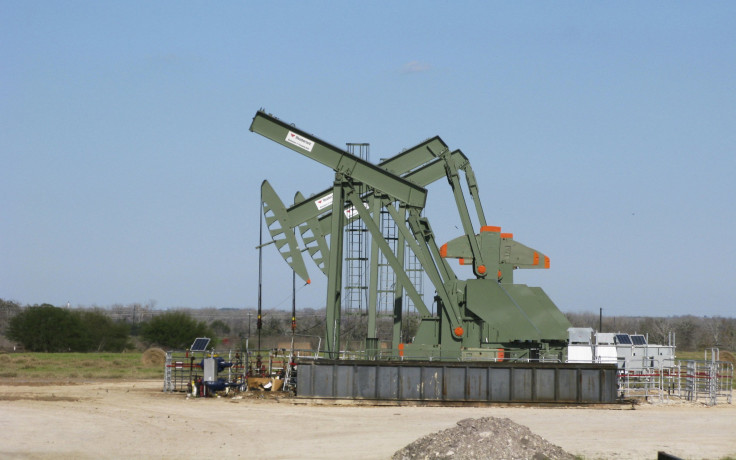As US Shale Drillers Suffer, Even The Bankrupt Keep Pumping Oil

As oil prices nosedived by two-thirds since 2014, a belief took hold in global energy markets that for prices to recover, many U.S. shale producers would first have to falter to allow markets to rebalance.
With U.S. oil prices now trading below $40 a barrel, the corporate casualties are already mounting. More than 50 North American oil and gas producers have entered bankruptcy since early 2015, according to a Reuters review of regulatory filings and other data. While those firms account for only about 1 percent of U.S. output, based on the analysis, that count is expected to rise. Consultant Deloitte says a third of shale producers face bankruptcy risks this year.
But a Reuters analysis has found that bankruptcies are so far having little effect on U.S. oil production, and a tendency among distressed drillers to keep their oil wells gushing belies the notion that deepening financial distress will prompt a sudden output decline or oil price rebound.
Texas-based Magnum Hunter Resources (MHRCQ.PK), the second-largest producer among publicly traded companies that have filed for bankruptcy, is a case in point.
It filed for creditor protection last December, but even as the debt-laden driller scrambled to avoid that outcome, its oil and gas production rose by nearly a third between mid-2014 and late 2015, filings show.
Once in Chapter 11, CEO Gary Evans said the bankruptcy, which injected new funds to ensure it would stay operational, could help to "position Magnum Hunter as a market leader."
The company did not respond to a request for comment for this story. However, John Castellano, a restructuring specialist at Alix Partners, said all of the nearly 3,000 wells in which Magnum Hunter owns stakes have continued operations during its bankruptcy.
Production figures can be hard to track post-bankruptcy, but restructuring specialists say that many bankrupt drillers keep pumping oil at full tilt. Their creditors see that as the best way to recover some of what they are owed. And as many bankrupt firms seek to sell assets, operating wells are valued more than idle ones.
"Oil companies in bankruptcy do not seem to automatically curtail production," said restructuring expert Jason Cohen, a partner at the Bracewell firm in Houston. "Lenders are willing to let them continue to produce as long as economically viable."
For most companies in bankruptcy or considering it, maximizing near-term production does make economic sense. Day-to-day well operating costs in most U.S. shale fields remain well below $40 a barrel. Bankrupt firms are also eligible for new financing that can allow them to keep pumping for some time.
50 and Counting
At least 20 publicly traded companies have filed for creditor protection since the start of 2015. They held at least 95,000 barrel of oil equivalent per day in production, according to their last disclosed annual output figures. Another 30 or so privately held companies also have gone bust in what already is the biggest wave of North American bankruptcies since the subprime mortgage crisis.
They account for just over 1 percent of U.S. output, but the figure is set to grow, with banks expected to slash credit lines to energy firms in their biannual review of borrowing limits in April.
In what could become the most high-profile reorganization in the sector, Oklahoma City-based SandRidge Energy Inc. (SDOC.PK) confirmed Wednesday that it has hired advisers to review its options, including a bankruptcy filing.
About a million barrels of U.S. oil production, over a tenth of the total, is under the control of firms considered "financially challenged," estimates Rob Thummel, a portfolio manager at Tortoise Capital Advisors.
Yet even if many more firms go bust, production is not expected to fall much.
"I could see [bankruptcies] as a marginal contributor to lower supply, but if you ask me, could it ever move the needle? The answer is no," said Bill Costello, a portfolio manager at Westwood Holdings Group.
The reason is the remarkable gains in productivity of U.S. oil rigs in recent years. The Energy Information Administration estimates that a well drilled late in 2015 produces twice as much as one from late 2013.
As a result, the EIA forecasts output will drop only 7 percent this year to 8.7 million barrels per day, even after U.S. oil and gas producers have shed more than 100,000 jobs, slashed spending and made 75 percent of rigs idle since the end of 2014.
Many bankrupt firms can sustain their output thanks to so-called debtor-in-possession financing for operating and other expenses made available by existing creditors, banks or private equity firms.
Magnum Hunter, for example, received $200 million in such funding and so far is being run by the same management as before its bankruptcy.
Many distressed producers have also drawn down their credit facilities or skipped bond payments prior to filing to conserve cash.
Among the companies reviewed by Reuters, Swift Energy Co. (SFYWQ.PK), Samson Resources Corp. and American Eagle Energy Corp Co. (AMZGQ.PK) all chose to skip interest payments ahead of bankruptcy filings, citing continuing talks with lenders to restructure their debt.
With operating expenses for existing U.S. shale wells between $17 and $23 per barrel, most companies can keep pumping unless oil falls below $20 per barrel, says David Zusman, chief investment officer of Talara Capital Management.
What bankrupt and financially stretched producers are unable to do is drill new wells, and since output from shale wells can fall as much as 70 percent during their first year, a sustained lull in drilling would gradually erode U.S. production.
Ultimately, the number of bankruptcies may matter less than the lack of funding. The lending reviews now underway are likely to leave more companies without sufficient credit to finance new drilling, analysts say.
"We could see a 150,000-200,000 [barrel per day] fall in oil production if financially challenged producers were to slow spending," Thummel said.
© Copyright Thomson Reuters 2024. All rights reserved.





















